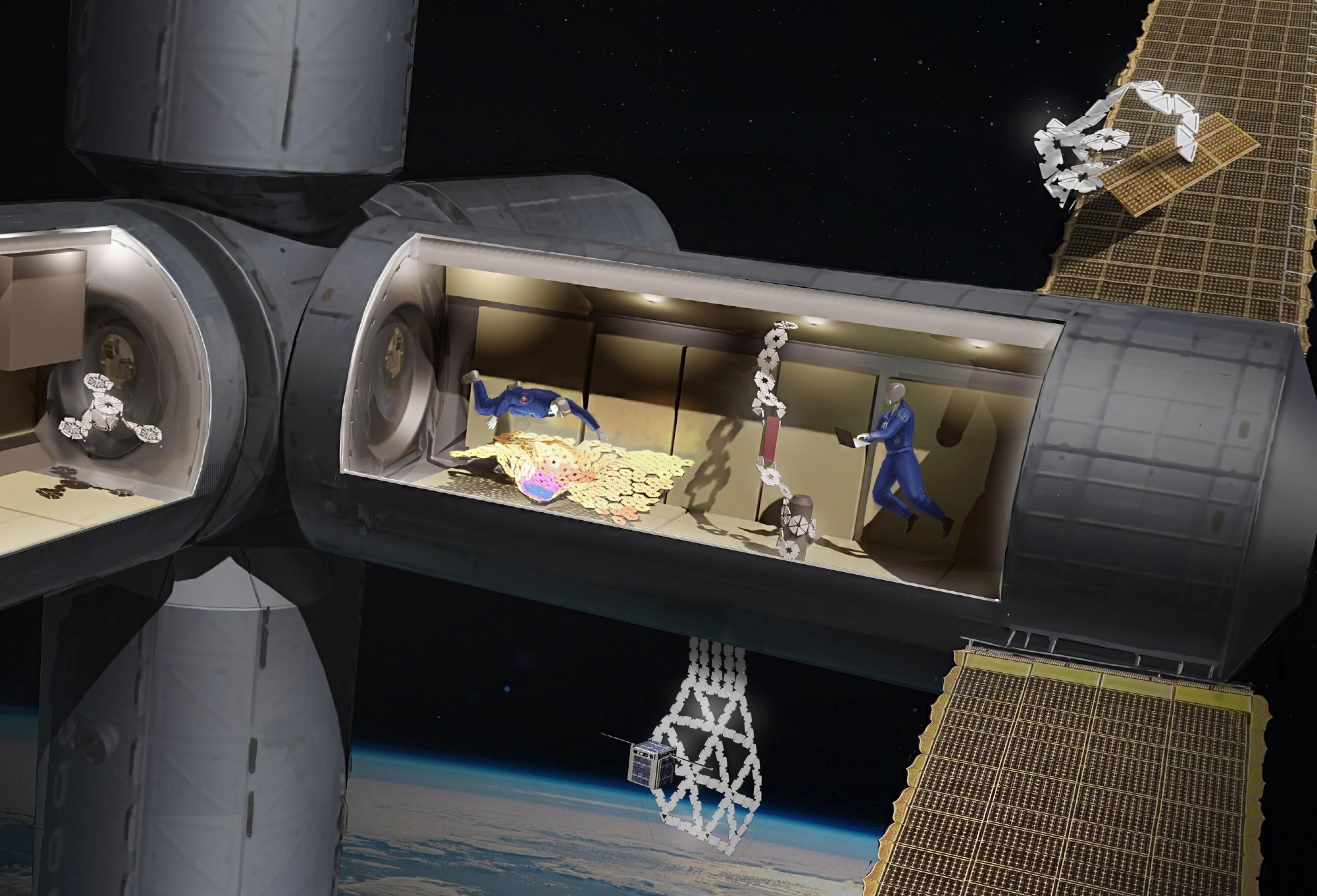At École Polytechnique Fédérale de Lausanne’s School of Engineering, Jamie Paik and her research group have made an origami-like robot that has the potential to alter its shape, move around and then interact with objects and people.

Image Credit: © 2023 Christoph Belke, Raphaël Galeuchet, École polytechnique fédérale de Lausanne RRL.
By integrating the inspiration from the digital world of polygon meshing and the biological world of swarm behavior, the Mori3 robot could morph from 2D triangles into nearly any 3D object. The EPFL study, reported in the journal Nature Machine Intelligence, displays the promise of modular robotics for space travel.
Our aim with Mori3 is to create a modular, origami-like robot that can be assembled and disassembled at will depending on the environment and task at hand. Mori3 can change its size, shape, and function.
Jamie Paik, Director, Reconfigurable Robotics Lab, École Polytechnique Fédérale de Lausanne
A Polygon Robot
The Mori3 robot’s separate modules are triangular. It is possible for the modules to quickly join together to make polygons of various sizes and configurations in a process called polygon meshing.
We have shown that polygon meshing is a viable robotic strategy. We had to rethink the way we understand robotics. These robots can change their shape, attach to each other, communicate, and reconfigure to form functional and articulated structures.
Christoph Belke, Post-Doctoral Researcher, Robotics, École Polytechnique Fédérale de Lausanne
To achieve this, the research group had to push the boundaries of several aspects of robotics, such as electronic and mechanical design, computer systems, and engineering.
This proof-of-concept is considered a success as Mori3 robots are good at doing three things that robots must be capable of: moving around, handling and transporting objects, and interacting with users.
Destined for Space
What is the benefit of making modular and multi-functional robots? Paik describes that to execute an extensive range of tasks, robots must alter their shape or configuration.
Polygonal and polymorphic robots that connect to one another to create articulated structures can be used effectively for a variety of applications. Of course, a general-purpose robot like Mori3 will be less effective than specialized robots in certain areas. That said, Mori3’s biggest selling point is its versatility.
Jamie Paik, Director, Reconfigurable Robotics Lab, École Polytechnique Fédérale de Lausanne
Mori3 robots were engineered in part to be utilized in spacecraft, which do not have the room to store various robots for every task that must be performed. The scientists believe that Mori3 robots will be utilized for communication targets and external repairs.
Mori3, the shape-shifter and modular origami robot
Video Credit: EPFL
Journal Reference:
Belke, C. H., et al. (2023) Morphological flexibility in robotic systems through physical polygon meshing. Nature Machine Intelligence. doi.org/10.1038/s42256-023-00676-8.